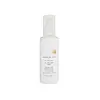What's inside
What's inside
 Key Ingredients
Key Ingredients

No key ingredients
 Benefits
Benefits

 Concerns
Concerns

 Ingredients Side-by-side
Ingredients Side-by-side

Water
Skin ConditioningCera Alba
EmollientDimethicone
EmollientIsopropyl Myristate
EmollientPhenoxyethanol
PreservativeHydroxypropyl Guar
Emulsion StabilisingPEG-40 Hydrogenated Castor Oil
EmulsifyingTriethanolamine
BufferingHydroxyethylcellulose
Emulsion StabilisingCaprylyl Glycol
EmollientDimethiconol
EmollientPEG-30 Glyceryl Stearate
EmulsifyingHydrogenated Styrene/Butadiene Copolymer
Ethylhexylglycerin
Skin ConditioningAcrylates/C10-30 Alkyl Acrylate Crosspolymer
Emulsion StabilisingHexyl Cinnamal
PerfumingLinalool
PerfumingDisodium Stearoyl Glutamate
CleansingCitronellol
PerfumingGeraniol
PerfumingBenzyl Alcohol
PerfumingLimonene
PerfumingHydroxycitronellal
PerfumingBenzyl Salicylate
PerfumingAlpha-Isomethyl Ionone
PerfumingPEG-30 Dipolyhydroxystearate
EmulsifyingTrideceth-6
EmulsifyingHydrolyzed Wheat Protein
Skin ConditioningCitral
PerfumingHydrolyzed Corn Protein
Skin ConditioningHydrolyzed Soy Protein
HumectantTocopherol
AntioxidantParfum
MaskingWater, Cera Alba, Dimethicone, Isopropyl Myristate, Phenoxyethanol, Hydroxypropyl Guar, PEG-40 Hydrogenated Castor Oil, Triethanolamine, Hydroxyethylcellulose, Caprylyl Glycol, Dimethiconol, PEG-30 Glyceryl Stearate, Hydrogenated Styrene/Butadiene Copolymer, Ethylhexylglycerin, Acrylates/C10-30 Alkyl Acrylate Crosspolymer, Hexyl Cinnamal, Linalool, Disodium Stearoyl Glutamate, Citronellol, Geraniol, Benzyl Alcohol, Limonene, Hydroxycitronellal, Benzyl Salicylate, Alpha-Isomethyl Ionone, PEG-30 Dipolyhydroxystearate, Trideceth-6, Hydrolyzed Wheat Protein, Citral, Hydrolyzed Corn Protein, Hydrolyzed Soy Protein, Tocopherol, Parfum
Cyclotetrasiloxane
EmollientCyclopentasiloxane
EmollientAlcohol Denat.
AntimicrobialParfum
MaskingPolyglyceryl-4 Isostearate
EmulsifyingHexyl Laurate
EmollientCetyl PEG/PPG-10/1 Dimethicone
EmulsifyingWater
Skin ConditioningCetearamidoethyldiethonium Succinoyl Hydrolyzed Pea Protein
CleansingHypnea Musciformis Extract
Skin ProtectingGlycerin
HumectantSargassum Filipendula Extract
Skin ProtectingGelidiella Acerosa Extract
Skin ProtectingSalvia Hispanica Seed Oil
MoisturisingSorbitol
HumectantCaprylic/Capric Triglyceride
MaskingXanthan Gum
EmulsifyingHydrolyzed Keratin
HumectantCoco-Glucoside
CleansingCarrageenan
Algin
MaskingLitchi Chinensis Pericarp Extract
Skin ConditioningChitosan
Cyclotetrasiloxane, Cyclopentasiloxane, Alcohol Denat., Parfum, Polyglyceryl-4 Isostearate, Hexyl Laurate, Cetyl PEG/PPG-10/1 Dimethicone, Water, Cetearamidoethyldiethonium Succinoyl Hydrolyzed Pea Protein, Hypnea Musciformis Extract, Glycerin, Sargassum Filipendula Extract, Gelidiella Acerosa Extract, Salvia Hispanica Seed Oil, Sorbitol, Caprylic/Capric Triglyceride, Xanthan Gum, Hydrolyzed Keratin, Coco-Glucoside, Carrageenan, Algin, Litchi Chinensis Pericarp Extract, Chitosan
 Reviews
Reviews

Alternatives
Ingredients Explained
These ingredients are found in both products.
Ingredients higher up in an ingredient list are typically present in a larger amount.
Parfum is a catch-all term for an ingredient or more that is used to give a scent to products.
Also called "fragrance", this ingredient can be a blend of hundreds of chemicals or plant oils. This means every product with "fragrance" or "parfum" in the ingredients list is a different mixture.
For instance, Habanolide is a proprietary trade name for a specific aroma chemical. When used as a fragrance ingredient in cosmetics, most aroma chemicals fall under the broad labeling category of “FRAGRANCE” or “PARFUM” according to EU and US regulations.
The term 'parfum' or 'fragrance' is not regulated in many countries. In many cases, it is up to the brand to define this term.
For instance, many brands choose to label themselves as "fragrance-free" because they are not using synthetic fragrances. However, their products may still contain ingredients such as essential oils that are considered a fragrance by INCI standards.
One example is Calendula flower extract. Calendula is an essential oil that still imparts a scent or 'fragrance'.
Depending on the blend, the ingredients in the mixture can cause allergies and sensitivities on the skin. Some ingredients that are known EU allergens include linalool and citronellol.
Parfum can also be used to mask or cover an unpleasant scent.
The bottom line is: not all fragrances/parfum/ingredients are created equally. If you are worried about fragrances, we recommend taking a closer look at an ingredient. And of course, we always recommend speaking with a professional.
Learn more about ParfumWater. It's the most common cosmetic ingredient of all. You'll usually see it at the top of ingredient lists, meaning that it makes up the largest part of the product.
So why is it so popular? Water most often acts as a solvent - this means that it helps dissolve other ingredients into the formulation.
You'll also recognize water as that liquid we all need to stay alive. If you see this, drink a glass of water. Stay hydrated!
Learn more about Water